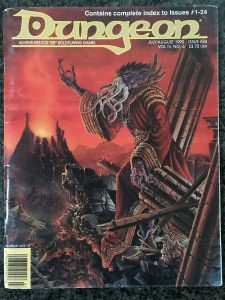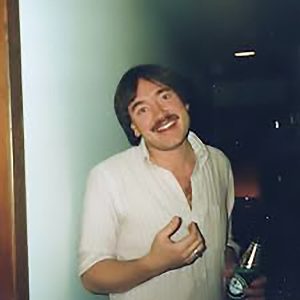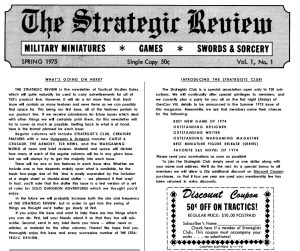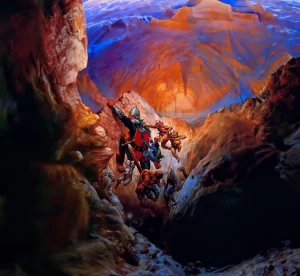
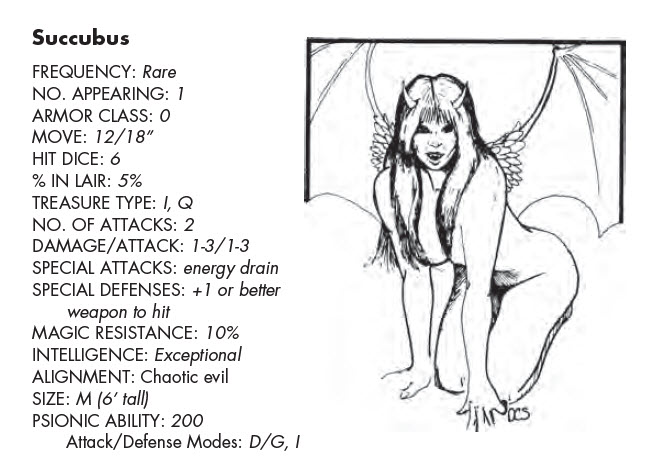
Expanded Explanation for All 18 Items in the Stat Block:
1. FREQUENCY:
Frequency in a monster stat block represents how common or rare the creature is in the game world. It serves as a guide for Dungeon Masters (DMs) to decide how likely it is for adventurers to encounter this monster during gameplay. It is more of a narrative tool than a strict mechanical rule, helping shape the game world's ecology, encounters, and story.
Definition: Indicates how often the creature is encountered in the game world. AD&D categories are Common, Uncommon, Rare, and Very Rare.
Application: Used by the Dungeon Master to determine encounter likelihood. "Uncommon" means the creature is not as prevalent as Common monsters but not exceedingly rare.
2. NO. APPEARING:
Definition: The average number of these creatures encountered at one time, usually in wilderness or open environments.
Application: In dungeon settings, this number often scales down to fit tighter spaces. A high number like 20 suggests they may be part of a pack, swarm, or group with strong social or hunting dynamics.
3. ARMOR CLASS:
Definition: Represents how difficult it is to hit the creature in combat. AD&D uses descending AC, where lower numbers are better (AC 0 is excellent, and AC 10 is poor).
Application: An AC of 5 indicates moderate protection, possibly from thick hide, basic armor, or agility.
4. MOVE:
The MOVE stat in a monster's stat block represents the speed at which the creature can travel during a combat round or while exploring. In AD&D 1e, movement rates are given in inches (for tabletop wargaming grid map, think table maps players use for their adventure), which correspond to different distances depending on whether the movement is happening indoors (dungeons) or outdoors (wilderness). Here's a detailed breakdown:
The scale changes depending on the setting:
- Indoors (Dungeon Movement): 1 inch = 10 feet.
- Outdoors (Wilderness Movement): 1 inch = 10 yards (30 feet).
Example: MOVE: 6"
Indoors: The creature can move 60 feet per round.
Outdoors: The creature can move 60 yards (180 feet) per round.
Definition: The creature's movement speed per round. In inches, each inch equals 10 feet for dungeon movement or 10 yards for outdoor movement.
Application: A speed of 18" is fast, meaning the creature can cover 180 feet per round indoors or 180 yards outdoors, making it capable of quickly closing distances or fleeing.
The 1-minute round continued in AD&D 2e, maintaining the same abstraction. Combat still assumed characters were making multiple movements and actions during the minute, with the rolls reflecting the most critical moments. The idea of fast pounding 6 seconds per round didn't come until 20 years later.
5. HIT DICE/POINTS:
Definition: Determines the creature's health. Hit Dice (HD) is usually rolled using 1d8 per Hit Dice, but some monsters, have fixed hit points for simplicity. A creature with 4 HD could have upto 32 Hit Points.
Application: With 30 hp, this creature can withstand moderate damage, suggesting a reasonably durable foe. A creature with 30 HP would take at least 6-8 successful hits from a low-level party member to defeat, which is a daunting challenge at this stage of the game.

6. % IN LAIR:
Definition: The chance the creature is encountered in its lair, where it might have home-ground advantages or additional treasures.
Application: A 0% chance means these creatures are always encountered outside their lair, possibly due to a nomadic or wandering nature.
7. TREASURE TYPE:
Treasure Type is a category used in AD&D 1e to determine the kind and quantity of treasure a monster possesses. It helps the Dungeon Master (DM) quickly reference loot potential during or after encounters, whether in a monster's lair or on their person. Each Treasure Type corresponds to a table in the Dungeon Master's Guide (DMG) 1st edition or in Monster Manual I, where specific amounts and types of treasure are listed.

A Treasure Type is a shorthand code (e.g., "A," "B," "C," etc.) that indicates the kind of treasure a monster might have. Some monsters have multiple treasure types (e.g., I, Q), and others have "Nil," meaning they carry no treasure at all.
Even if a monster has a Treasure Type, the % In Lair stat determines whether the party finds the treasure. For instance, a succubus has 5% In Lair, meaning there's only a 5% chance the party encounters its lair (where the Treasure Type "I, Q" is stored).
In Lairs: Most treasure is found in a monster's lair. For example, a dragon's hoard is a classic example of Treasure Type functioning at its fullest potential.
Treasure Types also reflect the monster's behavior and ecology. For example:
- A dragon hoarding vast riches has a high-level Treasure Type (e.g., H or A).
- Goblins, who might scavenge or raid, have more modest Treasure Types.
8. NO. OF ATTACKS:
Definition: The number of physical attacks only that the creature can make in a single combat round.
Application: A single attack suggests a straightforward combat style, such as a bite, claw, or weapon strike, rather than complex multi-attack routines.
9. DAMAGE/ATTACK:
Definition: The range of damage the creature deals per physical attack only, rolled as 2d4 in this case.
Application: This damage output indicates moderate offensive capability, enough to threaten mid-level adventurers without being overwhelmingly deadly.
Though in this example with the Succubus "only" causing 1-3 per claw attack in a round, its true Special Attacks include its energy drain (via a kiss or embrace) and its charm abilities (e.g., casting charm person at will).

10. SPECIAL ATTACKS:
Special Attacks in an AD&D 1e monster stat block represent extraordinary or supernatural offensive abilities that go beyond the creature's basic physical attacks. These attacks often have additional effects, like dealing extra damage, imposing conditions, or bypassing standard defenses. They make the creature more dangerous and can significantly impact combat or the story.
- Definition: Describes any unique or magical attacks the creature possesses. "Nil" means it has no extraordinary offensive abilities.
- Application: The absence of special attacks suggests the creature relies on basic physical attacks, making it predictable in combat.
Examples of Common Special Attacks
- Energy Drain:
- Monsters like wights or vampires can drain levels from characters with a successful touch or attack.
- Example: A vampire drains 2 levels per touch, making it a terrifying foe for even mid-level adventurers.
- Poison:
- Creatures like giant spiders or wyverns inject poison with their attacks.
- Example: A giant spider's bite might deal 1-8 damage and force the victim to save vs. poison or die.
- Breath Weapons:
- Dragons and similar creatures can unleash devastating breath weapons.
- Example: A red dragon breathes fire in a cone, dealing damage equal to its hit points (save for half).
- Gaze Attacks:
- Some monsters, like basilisks or medusas, have a gaze attack that can petrify or kill those who meet their eyes.
- Example: A medusa requires anyone who looks at her to save vs. petrification or be turned to stone.
- Charm and Mind Control:
- Creatures like succubi or vampires can use charm effects to dominate their victims.
- Example: A succubus can cast charm person at will, making it a subtle and manipulative foe.
- Constrict:
- Some creatures, like giant snakes, can constrict their prey after a successful attack, dealing automatic damage each round until the victim escapes.
- Example: A giant constrictor snake deals 2d4 constriction damage after a successful grapple.
11. SPECIAL DEFENSES:
Special Defenses in a monster's stat block represent unique or extraordinary abilities that make the creature harder to harm, affect, or kill. These defenses go beyond the creature's basic statistics like Armor Class (AC) and hit points, providing additional layers of protection against specific threats such as spells, attacks, or environmental hazards.
Definition: Lists any extraordinary or magical defenses the creature might have. "Nil" means it has no special protections.
Application: This makes the creature easier to defeat, as no immunities or resistances need to be bypassed.
12. MAGIC RESISTANCE:
Definition: The chance, expressed as a percentage, for the creature to resist magical effects or spells.
Application: A 15% resistance is relatively low but can still occasionally negate spells, frustrating magic-users.
13. INTELLIGENCE:
Definition: Indicates the creature's cognitive ability, with ranges from Animal (basic instincts) to Supra-Genius (extraordinary intelligence).
Application: "Average" intelligence means the creature can strategize, communicate, and possibly understand tactics, making it more than just a mindless beast.
14. ALIGNMENT:
Alignment in AD&D 1e is a way to understand how a creature or character approaches rules (law vs. chaos) and morality (good vs. evil). Lawful Good focuses on selflessly upholding rules to benefit others, while Lawful Evil exploits rules for personal gain at the expense of others. Together, these distinctions create depth in character motivations, driving meaningful interactions and conflicts in the game.
The Two Axes of Alignment
- Ethical Axis (Lawful, Neutral, Chaotic):
- This reflects how a creature views and interacts with order, rules, and structure:
- Lawful: Believes in order, structure, and adherence to laws or codes, whether those laws are just or not. Prioritizes stability, traditions, and hierarchies.
- Neutral: Takes a balanced approach, often indifferent to strict rules or total freedom. Neutral individuals might follow rules when it suits them but avoid dogmatic extremes.
- Chaotic: Values personal freedom and individualism over rules or structures. Resists authority, preferring flexibility, spontaneity, or rebellion.
- This reflects how a creature views and interacts with order, rules, and structure:
- Moral Axis (Good, Neutral, Evil):
- This reflects a creature's approach to kindness, altruism, and harming others:
- Good: Prioritizes helping others, selflessness, and promoting well-being. Respects life and dignity.
- Neutral: Seeks balance or is indifferent to morality. A Neutral character might act selfishly without being malicious or help others without strong altruistic motives.
- Evil: Self-serving or actively malevolent, prioritizing personal gain or pleasure over others' well-being. Evil individuals may seek to dominate, harm, or destroy.
- This reflects a creature's approach to kindness, altruism, and harming others:
Key Differences: Lawful Good vs. Lawful Evil
| Aspect | Lawful Good | Lawful Evil |
|---|---|---|
| View on Law | Laws are a tool for justice and fairness. | Laws are a tool for control and personal gain. |
| Treatment of Others | Respects and helps others, even at personal cost. | Exploits or dominates others for personal benefit. |
| Motivations | Justice, compassion, altruism. | Power, control, self-interest. |
| Philosophy | "Follow rules to do good and help society thrive." | "Follow rules to enforce control and gain power." |
| Example Actions | Rescuing an innocent prisoner at risk to themselves. | Enforcing unjust laws to oppress a population. |
15. SIZE:
- Definition: Denotes the creature's physical size, using categories like Small (S), Medium (M), and Large (L).
Size determines how much physical space a creature takes up on a battlefield:
- S (Small): Typically occupies 2.5 x 2.5 feet.
- M (Medium): Occupies 5 x 5 feet.
- L (Large): Occupies 10 x 10 feet or more.
| Size | Symbol | Description | Examples |
|---|---|---|---|
| Small | S | Up to 4 feet tall or long. | Goblins, kobolds, small animals. |
| Medium | M | 4 to 7 feet tall or long (human-sized). | Humans, orcs, ogres, most humanoids. |
| Large | L | 7 to 12 feet tall or long. | Ogres, trolls, horses, giant snakes. |
| Huge | H | 12 to 25 feet tall or long. | Giants, dinosaurs, large dragons. |
| Gargantuan | G | Over 25 feet tall or long. | Ancient dragons, rocs, colossal monsters. |
16. PSIONIC ABILITY:
Psionics for players in AD&D 1e is optional and not a core part of character creation for most campaigns. Psionics were introduced as a rare and specialized mechanic, intended for exceptional characters or campaigns with a specific focus on mental powers.
Psionic Ability in AD&D 1e refers to a creature's capacity to use psionics, a system of mental powers distinct from magic. Psionics encompasses abilities like telepathy, telekinesis, mind control, and other supernatural effects rooted in the mind rather than external arcane or divine forces. It is a rare and powerful mechanic that can make creatures or characters highly unpredictable.
How Psionic Ability Is Represented
- PSIONIC ABILITY: Value or Nil
- This entry in the stat block indicates whether the creature has psionic powers:
- Nil: The creature has no psionic abilities.
- Value (e.g., 200): A numerical score represents the creature's total Psionic Strength Points (PSPs), which fuel their psionic abilities.
- The presence of psionic ability often implies that the creature can engage in psionic combat and use psionic disciplines.
- This entry in the stat block indicates whether the creature has psionic powers:
- Attack/Defense Modes:
- If a creature has psionic abilities, its stat block will also list specific attack and defense modes, such as Ego Whip or Mind Blank. These are tools for psionic combat, where mental attacks and defenses are used to affect or dominate opponents.
17. Attack/Defense Modes:
Reserved for Psionics.
Attack/Defense Modes are a cornerstone of psionics in AD&D 1e, providing a unique and specialized way for characters or creatures with psionic powers to engage in mental combat. They add strategic depth to psionics, making it more than just "magic by another name." These modes make psionics feel distinctly mental -- a battle of wills rather than swords or spells.
18. LEVEL/X.P. VALUE:
The LEVEL (e.g. VI in LEVEL/X.P. VALUE: VI/950) tells the DM how dangerous the monster is and where it might appear in a dungeon or campaign world. LEVEL VI monsters like hell hounds are a mid-to-high challenge, often suitable for adventurers around 6th-7th level. The X.P. VALUE rewards players for defeating these monsters, scaling appropriately with quantity and difficulty. Together, these metrics help DMs balance encounters and progression, ensuring the game remains challenging and rewarding.
Example - Dungeon Depth for LEVEL III Monsters
| Dungeon Level | Monster Type (LEVEL III) | Challenge |
|---|---|---|
| 3rd Level | Gnolls, wights, giant spiders, minor undead (e.g., ghouls). | Combat-heavy with moderate special abilities. |
| Encounter Role | Guarding treasures, ambushing in groups, or acting as scouts for more powerful monsters deeper in the dungeon. |
Not all monsters in AD&D 1e have the LEVEL/X.P. VALUE explicitly listed in their stat block. This often applies to creatures like the succubus, certain unique monsters, or extraplanar beings. The omission doesn't mean these creatures don't have an XP value -- it simply reflects how their challenge and reward might be handled differently.
Expanded Explanation of LEVEL/X.P. VALUE
| Aspect | LEVEL (VI) | X.P. VALUE (950) |
|---|---|---|
| Dungeon Depth | Suggests monsters designed for the 6th dungeon level. | 950 XP reflects a moderately dangerous creature. |
| Challenge to Players | Appropriate for 6th-7th level adventurers. | The reward scales with the number of monsters defeated. |
| Special Abilities | Accounts for fire breath or pack tactics (if present). | These features boost the X.P. VALUE compared to simpler creatures. |
| Scaling with Quantity | LEVEL VI monsters often appear in groups (e.g., packs). | A group of 5 monsters = 950 × 5 = 4,750 XP. |

